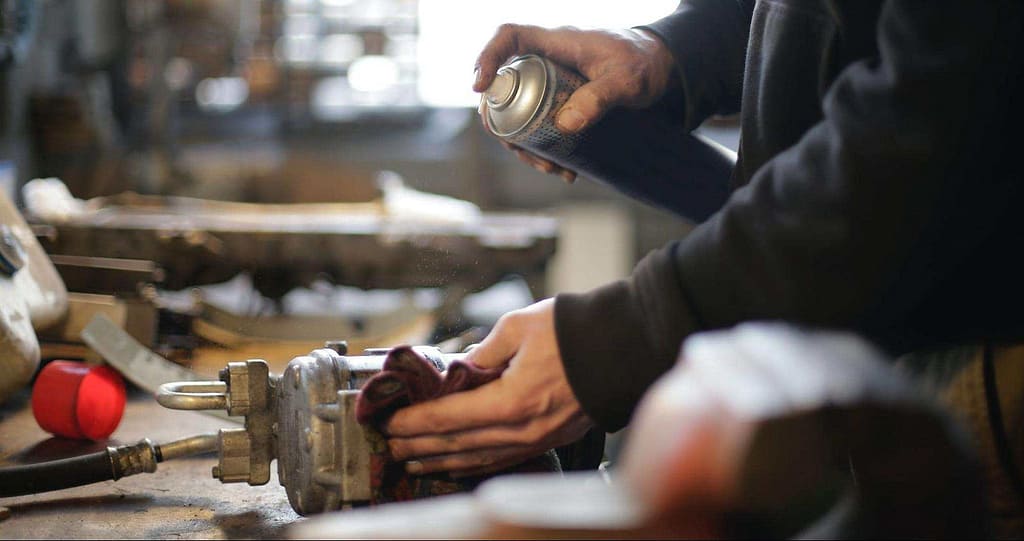Today we live simpler lives because of automated garage doors. However, if these modern conveniences aren’t maintained, they could generate too much sound, malfunction, or misfire. For ongoing use and proper performance, it is crucial to learn how to lubricate garage door components. Ideally, you should strive to oil your garage door’s moving parts roughly once every six months to maintain everything operating smoothly. Regular garage door lubrication is certainly just as crucial to your overall upkeep as any other typical garage door maintenance. Regardless of the type, these slabs are big and heavy, so it’s crucial to take care of them for safety. Additionally, by maintaining garage door servicing, you may wind up spending less money on repairs over time. The biggest moving component of your residence, regardless of the sort of garage door you have, should always be kept lubricated.
Why Lubricate Your Garage Doors?
To properly lubricate your garage door, you must first comprehend why you need to do so. Is your garage door making noises every time you open or close it? The commotion is tolerated by many owners who believe that this is just how garage doors are. In essence, that noise is a signal that the door requires lubrication and will be wrecked if you don’t take care of it. You need to lubricate your door if it is beginning to make a lot of noise when you open and close it. However, this is a simple task that you could complete on your own. However, before you do so, you must know which parts of your garage door you need to lubricate.
Garage Door Parts to Lubricate

As part of your custom-designed garage door routine maintenance, you should regularly lubricate many parts of the garage door for easy operation. Make sure to wash out all parts with a damp rag to eliminate any dirt or grime before lubricating. Use a different dry cloth to wipe out the area as you go through the lubricating procedure to prevent too much leaking on the garage floor. Once all of it is done, you can commence lubricating the sections listed below:
Hinges: Lubricate the hinges’ fixed points to prevent squeaking. However, only apply this to the garage door’s hinges made of metal. Spare the plastic hinges from any such application as the plastic may eventually degrade due to some lubricants.
Rollers: Your garage door moves up and down on metal rollers. If the wheels on your rollers are composed of nylon, make sure to oil the rollers without spilling any lube on the synthetic material. Metal rollers require less finesse, but it’s still a good idea to cover your flooring and your vehicle in case any leaks occur.
Springs: Find the torsion springs responsible for elevating and lowering your garage door. One of the most crucial components of a garage door to lubricate is the springs because doing so can prolong both its longevity and performance. Apply just enough to improve their range of motion.
You must avoid applying any solution to the door’s bearing surfaces or rails. Although you can clean them to ensure they are operating at their utmost, lubrication won’t make these parts work more effectively.
How to Lubricate Garage Door: Easy Steps

Step 1: Dust and clean the tracks of the garage doors:
The very first stage in greasing garage doors is to wipe the tracks. The tracks shouldn’t be greased, even though they must be kept spotless in order for the rollers to easily move when the door is opened and closed. Start by clearing the tracks of any dust or other debris. After that, use a damp cloth to wipe away any last traces of dirt and dust. If necessary, you can also think about using an automotive brake cleaner to scrub away stubborn and jammed stains.
Step 2: Lubricate the rollers and hinges on the doors
After cleaning the grooves, it’s time to oil various parts. When considering how to repair garage door rollers and hinges, keep in mind that silicon or lithium lubrication is advised. Lift the door slowly if necessary, or get assistance to oil the hinges. Apply oil to the hinges with a brush or mist while the door slides down the tracks. Then, the grease must be applied to the rollers, which are attached to the door’s tracks next to the hinges. These rollers’ small bearings can be greased by utilizing the narrow nozzle connector to apply grease to them.
Step 3: Lubricate the springs and bearing plates.
For the next step, you will need a step stool. The top part of the majority of garage doors has springs. The round bearing slabs are positioned on both sides of the springs. The bearing plates and springs should both be lubricated to ensure maximum efficiency. Brush or spray the grease liberally onto the surfaces of these parts.
Further, you ought to oil the garage door before opening it. By moving in this way, the garage door lubricant will be distributed more uniformly. The door’s springs may need to be replaced if you detect that they are distorted or otherwise broken. The replacement of garage door springs can be difficult and dangerous, therefore, It is preferable to employ a trained professional to replace garage door springs.
Step 4: The top railing and arm bar should be lubricated.
Spraying lubricant on the top of the rail and arm bar is the next important step in lubricating a garage door. In case you’re not acquainted with the top rail, it’s the section of the doorway that swings parallel to the garage ceiling. By looking for the portion of the door where the rope runs, you can also spot the top rail bar. The part that needs lubrication is located where the chain travels along the top of this rail. The top rail and the garage door are connected by the arm bar. Additionally, this component needs to have oil rubbed or drizzled on it to ensure proper operation.
Step 5: Grease the lock and verify everything.
Lastly, apply your lubricant to the garage door locks before concluding. This will prevent the lock from degrading and make locking and unlocking the door easier. After that, re-connect the door’s source of electricity and examine it to ensure it operates. Next, to assess whether the door is sliding and sounding smoother than before, listen intently and pay particular attention when it shuts and opens. However, It might be time to schedule an appointment with a garage door technician to evaluate the problems if garage door lubricants don’t seem to work.
It’s crucial to learn how to lubricate a garage door as part of repairs and maintenance. The lifespan of your garage door will be extended, and it will operate more efficiently and quickly with regular maintenance of the working parts. Thankfully, greasing a garage door isn’t particularly difficult. You can finish this assignment alone if you follow the above step-by-step guide. However, if you see any portions of your door that appear to need repairs, it could be time to contact a garage door technician.
What can be used to Lubricate Garage Doors

You require a lubricating silicone spray, white lithium-based grease, or special garage door grease to lubricate a garage door. One common option is WD-40, but under no circumstances should you put it on your garage door, and the experts advise against using it. When it comes to rinsing and corrosion cleaning, people frequently mistake this liquid for a lubricant. For a little period, it will provide some lubricating benefits, but over time, it will worsen the situation. What alternative should you use? A silicon mist or white lithium lubricate are your top picks. These are intended to grease working parts and facilitate their smooth operation. They frequently arrive in the form of spray bottles, which makes it even simpler to administer them to mechanical components.
Bottom Line
To make sure your door is smoothly and properly functioning, you need to make sure it’s lubricated and appropriately greased. This will assist keep it in good functioning condition and reduce the amount of unwanted noise it makes, hence improving the longevity of the different components. It is not difficult to lubricate a garage door, as you can see. You can keep your garage door in prime shape by following the instructions outlined in this article as long as you have the basic resources, which ought to include a good garage door lubricant.
FAQs
What should I use to lubricate my garage door?
You can use a silicone-based garage door lubricant to maintain smooth operation. Avoid using WD-40 or grease as they can attract dust and debris, leading to potential issues over time.
What is the best lubricant for garage door rollers?
Silicone-based lubricants are ideal for garage door rollers. They provide smooth operation, resist attracting debris, and work well in various temperatures, ensuring effective and long-lasting performance.
What can I use to lubricate my garage door rails?
You can use a lithium or silicone-based spray lubricant for garage door rails. Apply a small amount along the length of the rails to reduce friction and ensure smooth door movement.
What is the best way to lube garage door springs?
Try using a silicone-based spray lubricant on garage door springs. Apply it sparingly, focusing on the coils, to reduce friction and enhance the longevity and performance of the springs.
How to lubricate your garage door tracks?
Start cleaning the tracks first, then apply a silicone-based lubricant along the length of the tracks. Wipe away excess lubricant and debris to ensure smooth garage door operation.




